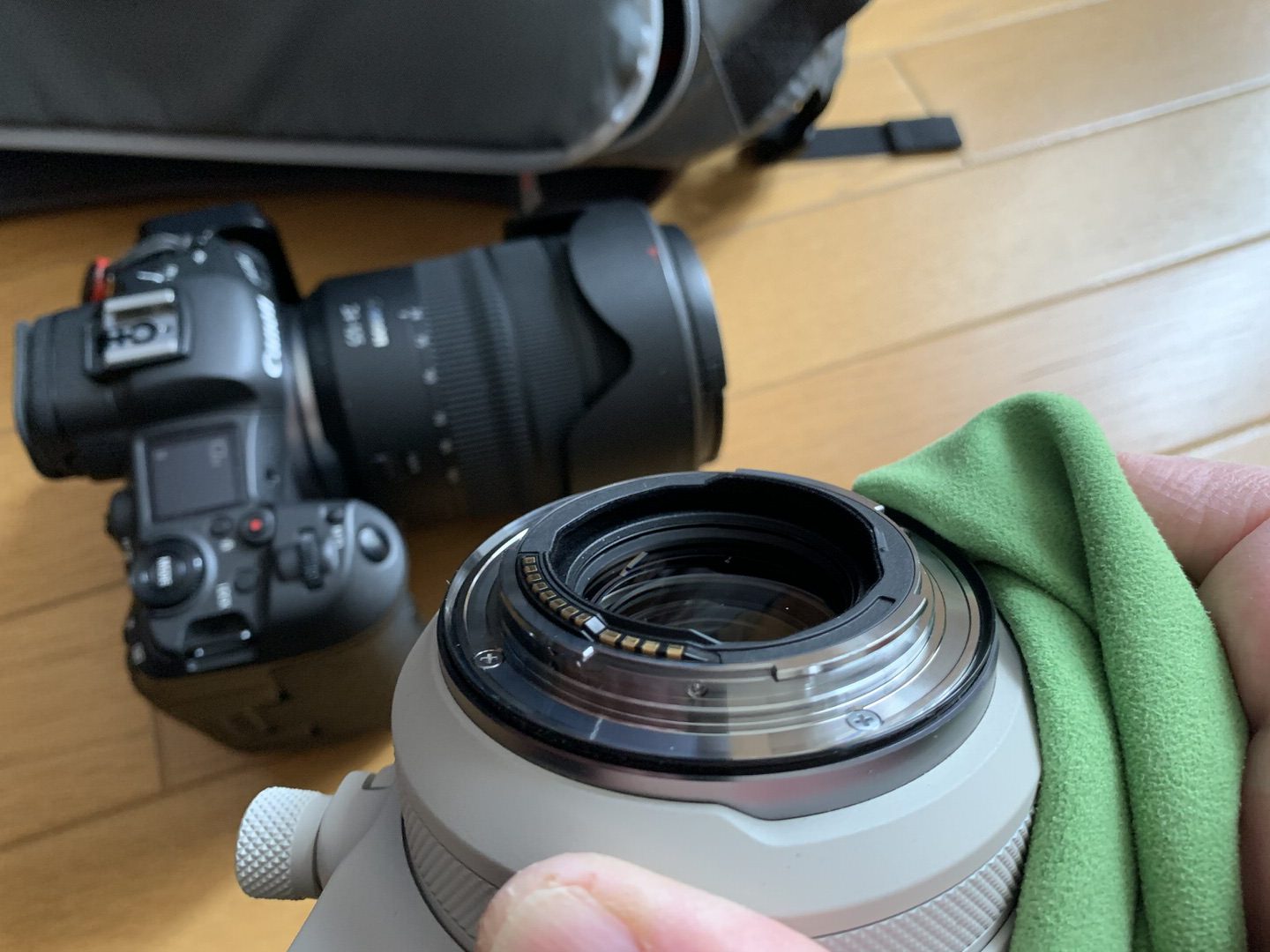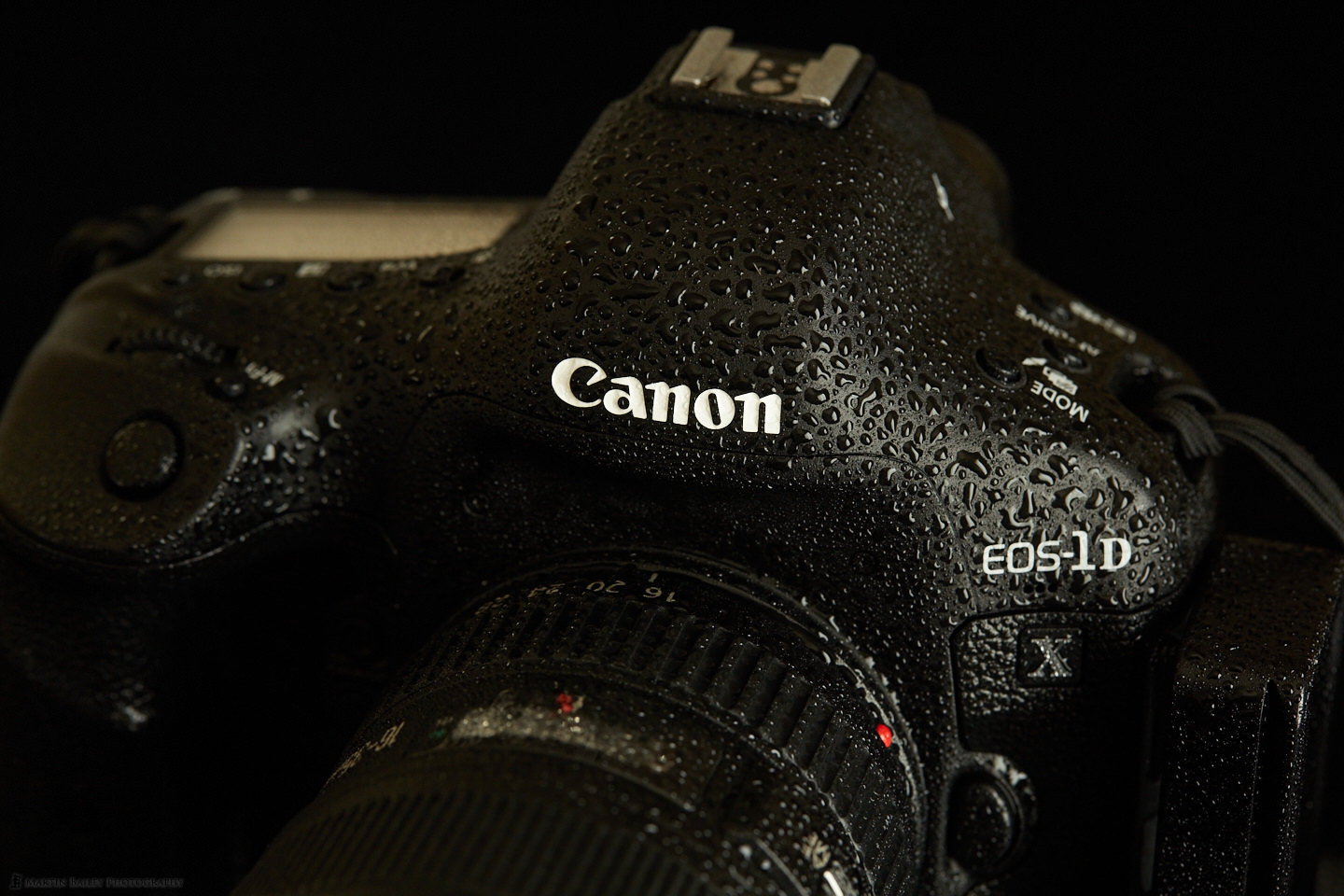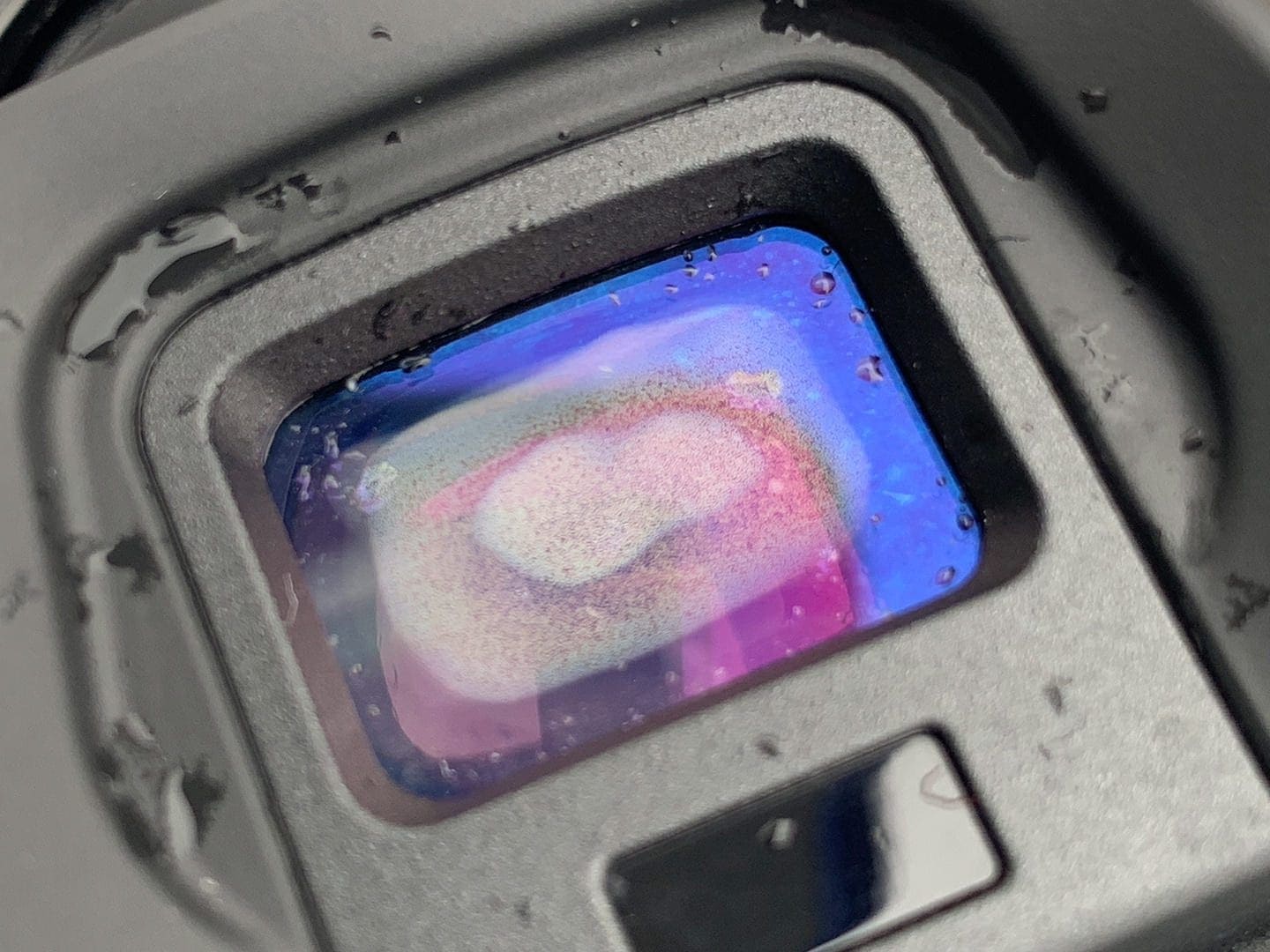Visit Library for MBP Pro eBooks |
I can’t recall ever dedicating a post to looking after our gear, and I was reminded of this task a number of times recently, both after my return from Namibia and as I spoke with a member of the archery club that I’ve joined, when they noticed me wiping my gear down as I packed it into my back at the end of our practice session. They thought I was being very conscientious as I wiped the various parts of my recurve bow while dismantling it, and I replied that I always do this with my tools. I know that many photographers do this, but figured it was worth talking about a couple of points, so here we go.
I should say that one of the main reasons I am currently wiping down my archery gear is because I’m practicing in temperatures over 30 degrees Celsius or 86 degrees Fahrenheit, so I’m pretty much constantly perspiring, and I don’t want to leave the salt on my bow. When I first got my bow, I didn’t take a cloth, and the result was that I had to get it all back out again when I got home to wipe it down, so I started to take a cloth, and now I’m killing two birds with one stone by doing this as I pack the gear away.
I recalled when I was shooting in Antarctica and often came back to the ship with sea spray on my gear, and that can be corrosive, so no matter how tired I was, I would take all of my gear out of my camera bag, lay it out on the top bunk of my bed, and wet, then rang out a cloth leaving it just damp, and wiped my cameras and lenses down. If I’d used my tripod, or it had also taken some spray, I’d fully extend all the legs, wipe that down too, then leave it to dry before putting the legs away again. Of course, how I did this depended on how rough the sea was. In a storm, I’d just wipe things, then wipe them again with a dry cloth and put them straight back into the bag to avoid them from falling off the bed when the ship rocks. The important thing to note is the necessity to get the salt water off the gear quickly. Using a damp cloth doesn’t hurt the equipment and dries almost instantly.
In addition to salt water, dust is another thing that can gradually damage our gear, so generally, when shooting in places like Namibia, where there is a lot of dust and sand if it’s been a windy day, or I know I’ve gotten a bit of dust on my gear, I do the same thing at the end of the day, using a damp cloth to wipe everything down. Another thing that I wanted to talk about in relation to traveling to dusty countries though, is the necessity to one last clean when you get home.
Most of the time in sandy or dusty countries, you’ll find yourself with a little sand in your bag. This may blow in when you open the bag, or fall off of your gear when you put it into the bag. Because of this, after I get home I take a little time to wipe the bag itself down with a damp cloth, and then I use a vacuum cleaner to clean the inside of the bag. I also at this point give all of my gear one last wipe with a damp cloth before giving it a few moment to dry and then put it into my humidity controlled cabinets, which is where I store all of my gear while not using it.
With sand, I also find that it can get stuck to the rubber weather seal on the mount of my lenses, so I use the damp cloth and run it around the inside and outside of the seal, as you can see in this photo from when I was cleaning my gear after returning from Namibia this year. You can also see a few grains of sand around the inside of the lens and on the back element. To remove them I hold the lens up with the bottom facing down and use an air blower to dislodge the sand. With the lens facing downwards, the sand generally falls away leaving the lens clean.

The same goes for cleaning the sensor of the camera. First, I hold the camera up with the sensor facing down, and blow the inside of the sensor chamber, to dislodge anything on or around the shutter, then I turn on Manual Sensor Cleaning in the menu, which opens the shutter exposing the sensor, which I also give a good blow while holding the camera with the sensor facing downwards.
I used to use a rubber plunger to remove stubborn dust until the heat got to the rubber one year, and I tried to remove some dust before a trip only to find that the rubber had perished, and I left a chunk of it sticking to my sensor. I was able to find a store in town that would clean it off safely, but it was a scare, so I threw the plunger out and never bought a replacement.
I have actually found though that pretty much from around that time, and especially with the Canon mirrorless cameras, I am getting very little stubborn dust on my sensors now. If I notice a bit of dust in a photo, generally just a blow with my blower is enough to dislodge it. I haven’t had my sensor cleaned professionally now for a number of years. I generally replace the camera every three or four years and have not had a sensor cleaned for that entire time for the last few cameras. With the mirrorless cameras I put this down to the option in my cameras to close the shutter when the lens is taken off the camera.
As I mentioned earlier, I do keep my gear in humidity-controlled cabinets, and that is very important if you live in a place with a lot of humidity. Tokyo is very humid during the summer, and I found myself with mold forming on my gear when I first moved here, so I have used humidity-controlled cabinets for many years now. I mentioned this in detail and covered what I use in Episode 744 of this podcast, so check that out if you are interested.
So far, I’ve talked about what I do after a shoot or trip, but I wanted to also add a few paragraphs about how I shoot. With me being so careful about cleaning my gear, you might think that I am really protective of my gear in the field too, and to a degree, you’d be right, but I am not overly protective. My tools are to be used, be it my cameras and lenses, or my new recurve bow for archery. The most important thing while working with these tools is to get the job done, making great photos in the case of photography. If this means I have to get a bit of dust or moisture on my gear, that is what will happen. If you are not using a weatherproofed camera and lenses, you do have to be careful to not allow them to get too wet or dusty, but in general, I find that in light rain or dusty conditions, draping a cloth over the camera, then periodically wiping off any water, is enough to keep it from getting inside the camera. With dust, I prefer to blow it off with an air blower while outside, then wipe it down later when I finish the shoot.
Also, don’t be fooled by the overzealous marketing blurb of camera manufacturers. Canon, for example, will say things like a new camera has “improved weather sealing,” which is entirely misleading. In the Canon range, only their 1 series bodies have ever been completely weather sealed, and only when using weather-sealed L lenses. Cameras like the 5D or the R5 etc. have limited weather sealing, which is what helps to keep them from breaking with the slightest bit of moisture, but they are not fully weather sealed, so cannot be used in pouring rain without taking any measures to keep them dry. The 1 series bodies can be used in the pouring rain because they are made to withstand that kind of use.

To prove my point about the none-weather sealed Canon cameras, I used my 5D Mark III in Iceland during a rainstorm, and sure enough, after an hour or two of getting drenched, it died, and I had to switch to my EOS-1DX that you can see in this photo. I did not protect the 1DX from the rain for the remaining few hours of the shoot, and it didn’t bat an eyelid. Not the most intelligent way to make a point, I know, but I had to prove to my partner over there that the 5D was not weather sealed, so I let the inevitable happen. Besides, three days later, after keeping it wrapped in dry towels, the 5D did come back to life and was fine for a few more years of use.
Another thing I wanted to mention is changing lenses in wet or dusty locations. Again, my priority is getting the shot with the right lens. When I can use two cameras, I try to guess what lenses I’ll need and put the two most likely candidates on the cameras. If I do have to change lenses though, and I can’t get into a sheltered location to do so, I will generally turn my back to the offending element, and change lenses anyway. I try to be quick, but don’t rush to the point that I might fumble with the lenses. I always check my images in the evening while traveling, and if I notice any dust on my sensor, I will try to blow it off with an air blower that evening.
Condensation
We can’t really finish without talking a little about dealing with condensation. Although people often recommend putting your gear into plastic bags and sealing then when going from cold to warm environments, I personally just ensure that I put my camera and lenses back into my camera bag, and zip it up, before going in from the cold. This is generally enough, even when going in from -28° Celsius or 2° Fahrenheit.
Note too that it’s not enough to simply check that condensation is not forming on the outside of your gear. The worst problem I’ve had with condensation was when I accidentally left my bag open with cold gear inside and condensation formed on the inside of one of my lenses. I also had a problem with the EOS R with condensation forming inside the viewfinder, making it almost impossible to use the camera. I haven’t shot with the EOS R5 in really cold conditions yet, due to the pandemic, but I’m hoping it handles the cold and moisture better than the EOS R did.

Anyway, the moral of this entire story is to use your gear practically in the field, taking care when possible, but with the priority on getting great images, then give your gear the love required to keep it purring along when you are finished. You should be rewarded with less maintenance fees, and if you sell your gear in part exchange for new gear, you may find that you’ll get a little more for your gear too.
Show Notes
Subscribe in iTunes to get Podcasts delivered automatically to your computer.
Download this Podcast as an MP3 with Chapters.
Visit this page for help on how to view the images in MP3 files.


Thanks Martin, a few nice reminders there, all useful stuff
Thanks, Roger! I’m pleased you found this useful.
I presume that you have encountered some windy + dusty conditions in Namibia. Do you take any special precautions under these conditions, for example, do you put your camera/lens inside a plastic bag to keep fine sand/dust from getting inside during use? I’m going to Death Valley USA in January where there is very fine sand which has a bad reputation of getting inside even “dust and weather resistant” camera gear, so I am trying to figure out what precautions I ought to take with both “L” and non-L lenses.
I see you are using a microfiber cloth to clean the outside of your cameras and lenses. Do you use two or three separate cloths for bodies, for lens barrels, and then for the lens elements? Do you then wash the cloths after cleaning your gear?
Thanks.
Hi Karl,
Generally, I don’t put the camera into a bag or wrap-around cover. Unless you are working in a sandstorm, the advice I gave above should stand. Ensure that you blow off any sand that does get onto your gear, and give it a good wipe down when you get back to your lodgings. If you do find yourself literally in a sandstorm, if there is a photo to be shot, get your camera out and shoot quickly, then put it back into your bag. Also, if you have a coat large enough to cover the camera and lens, put it inside the coat, then get it out when you need to shoot. Generally, though, sandstorms are not that photogenic, with perhaps a few pockets of clarity that can lead to nice shots, so I find that the camera doesn’t need to be out the whole time. If you plan on shooting in a sandstorm, then a plastic cover with a lens hole may be the better option, but I never take these to Namibia and have never felt the need for one.
The cloth in the photo is actually a microfibre camping towel, so it’s pretty big. I only use that for wiping down the outside of the camera and lenses. I have a separate lens cloth for wiping the lens glass or bag element. I always try to blow off any dust or moisture from the glass first and only wipe them if blowing the glass doesn’t work. If there is anything that cannot be wiped off, I use a spot of alcohol on a lens paper and generally have to repeat that process two or three times to get the lens clean.
For the cloth seen in the photo, yes, I do wash it again after wiping the gear and allow it to dry. For the lens micro cloths, because I usually blow off any dust before using them, I don’t usually have to wash them while travelling because I take three or four of them, but on really long trips, I do sometimes wash them and allow them to dry overnight.
I should have mentioned this in the post, so great question Karl. Let me know if anything is left unanswered or if you have any other questions.
Regards,
Martin.